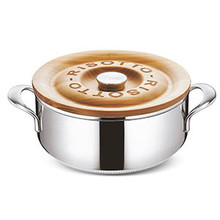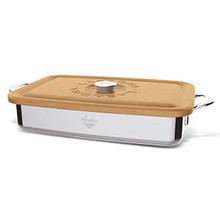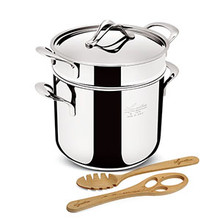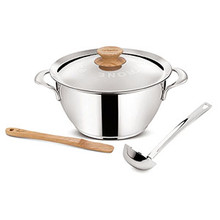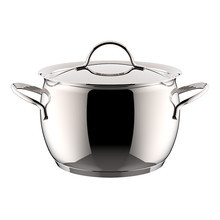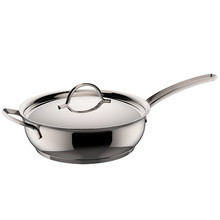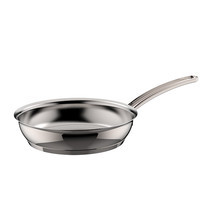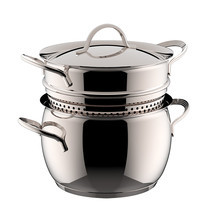Customer services
Frequently asked questions
All the answers to your questions
A. Quality of materials
a. What are our standards for stainless steel?
To make our steel products we use AISI 304 (type 18/10) stainless steel, an alloy consisting of 18% chrome, 10% nickel In addition to improving resistance to corrosion, nickel considerably increases ductility, i.e. the ability to deform permanently without breaking.
The corrosion resistance of stainless steel, however, may be decreased by external causes such as food residue, salt, etc. It is therefore incorrect to think that stainless steel is indestructible and cannot corrode. Its resistance and durability are brought about by the correct choice and processing by the manufacturer as well as by proper use and maintenance by the consumer.. However, following suitable use and maintenance instructions, it is possible to avoid issues.
B. Stainless Steel
a. Use
1. On which heating sources can Lagostina cookware be used on?
Check the graphics symbols on the package or on the cooker that show the suitable heating sources. In general Lagostina cookers can be used on all types of hobs including induction ones (in which case, only if the cookers are fitted with a magnetic steel base).
2. Can I store food in Lagostina cookware?
We suggest not leaving food in the cooker either before or after cooking, but to transfer into a container before store it in the fridge.
b. Cleaning
1. Is Lagostina cookware easy to clean?
In order to keep it in perfect operating condition, all parts of the pressure cooker must be kept clean. Avoid using abrasive products, bleach or chlorinated products.
Clean the cooker after each use: long time contact with salty or acidic food might affect the metal and give rise to the formation of stains or discolourings inside the cooker.
These may be removed using lemon juice or diluted vinegar or with a normal stainless steel detergent, such as Lagostina's Polvere di Stelle.
These stains are not considered as manufacturing defects and do not alter the product's quality and functionality at all.
2. Stains have formed on the cookware surface, what should I do?
During use, stains or different colours may appear on the surface due to lack of proper care or natural phenomena:
1) Whitish or golden stains, together with white or reddish dots in the middle.
This type of stain is attributable to the “pitting” phenomenon, which is nothing but surface corrosion caused by undissolved salt.
To prevent its formation, always add salt to the water or hot or boiling liquid.
Dissolve the salt by stirring the liquid or other ingredients. If these small stains should appear due to lack of precautions, do not worry as they do not affect the cooker's quality and functionality at all. These stains however, are in no case attributable to manufacturing defects.
2) White stains.
Sometimes when the cooker is exposed to intense heat, small white limescale spots may be observed on the bottom, due to a natural phenomenon caused by the degree of water hardness.
Also in this case, the cooker's quality and functionality are not affected at all. This is not a manufacturing defect.
3) Wide bluish-purplish discolourings
This characteristic colour that may sometimes appear on the surface of the cooker is due to some products used for cooking or to the starch contained in some foods, such as pasta or rice.
They may be easily removed by rubbing the inside of the ware with a soft cloth moistened with lemon juice or vinegar or with a specific product for cleaning stainless steel.
4) Bronze-like colour on the inner and outer surface
The surfaces may evenly turn this colour when the empty container is inadvertently left on the heat.
It is good practice, when using gas rings, not to let the flame extend to the sides of the cooker. You will save energy and prevent overheating the casserole.
In addition to the above precautions it is good practice to follow other instructions:
a) Immediately wash cookware after use with hot water and a detergent, avoiding the use of abrasive products, steel wool or synthetic scourers;
b) Do not leave food in the cookware for long since it contains natural salts and acids;
c) Either when washing by hand or when using the dishwasher, never use bleach or chlorinated products (they are very aggressive on steel, especially when hot);
d) Do not keep the dishwasher closed at the end of washing.
Visit our Care and Usage page for more information.


